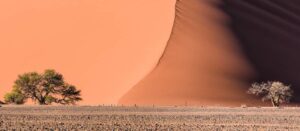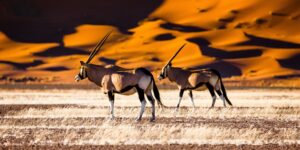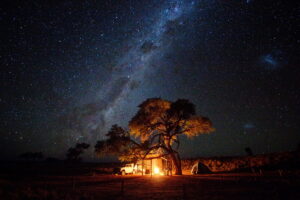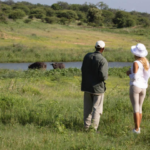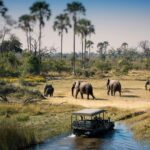Namibia Desert Safari
When one thinks of Africa, images of verdant savannas and dense jungles often come to mind. However, Africa’s diversity extends far beyond that. One of the continent’s most breathtaking landscapes is the Namib Desert, an arid expanse that stretches along Namibia’s coastline. This ancient desert, believed to be the world’s oldest, offers a unique blend of towering sand dunes and an array of wildlife that has adapted to survive in such a harsh environment. Join us as we delve into the wonders of a Namibia desert safari, exploring the dunes and wildlife that make this region a must-visit for adventurers and nature enthusiasts alike.
The Allure of Namibia’s Desert Safari
Namibia’s desert safari is an experience like no other. Unlike traditional safaris that focus on lush game reserves, a desert safari introduces you to a starkly beautiful landscape where life has found a way to thrive against all odds. The Namib Desert is home to some of the planet’s most dramatic scenery, including the iconic red dunes of Sossusvlei.
The Namib Desert: A Timeless Beauty
The Namib Desert is not just any desert; it is a place of timeless beauty and geological significance. Notably, stretching over 2,000 kilometers along Namibia’s Atlantic coast, it is characterized by vast expanses of sand dunes, gravel plains, and rugged mountains. In fact, the desert’s age is estimated at around 55 million years, making it the oldest desert in the world.
Sossusvlei: The Heart of the Namib Desert
At the heart of the Namib Desert lies Sossusvlei, a clay pan surrounded by some of the highest sand dunes in the world. These dunes, which can reach heights of up to 300 meters, are a photographer’s dream, particularly during sunrise and sunset when the play of light and shadow creates mesmerizing patterns. The name “Sossusvlei” itself means “dead-end marsh,” indicative of the pan’s nature as a drainage basin for the ephemeral Tsauchab River.
Wildlife of the Namib Desert
Despite its harsh conditions, the Namib Desert is teeming with life. From tiny insects to majestic mammals, the desert’s inhabitants have evolved remarkable adaptations to survive. Here are some of the most notable wildlife species you might encounter on a Namibia desert safari.
The Resilient Gemsbok
The Gemsbok, or Oryx, is one of the most iconic animals of the Namib Desert. Recognized for their striking appearance and impressive horns, these antelopes are perfectly adapted to desert life. Remarkably, they can survive without water for extended periods by obtaining moisture from the food they eat and efficiently regulating their body temperature.
The Elusive Desert Elephant
Desert elephants are a unique sub-species of African elephants, specially adapted to live in the harsh desert environment. They have smaller bodies and larger feet than their savanna counterparts, allowing them to travel long distances across the sand in search of food and water. These elephants are often seen in the dry riverbeds of the Namib Desert.
The Tenacious Namib Desert Beetle
One of the smaller, yet fascinating, inhabitants of the Namib Desert is the Namib Desert beetle. Remarkably, this insect has developed a unique method of collecting water from fog. By doing so, it positions its body at the right angle, allowing fog droplets to condense on its back and trickle down to its mouth. Ultimately, this ingenious adaptation enables it to survive in an environment with minimal rainfall.
Activities to Experience on a Namibia Desert Safari
Dune Climbing: Conquering Big Daddy and Dune 45
For those seeking a physical challenge, climbing the massive sand dunes is a must. Big Daddy and Dune 45 are two of the most popular dunes for climbing. Big Daddy, standing at about 325 meters, is one of the tallest dunes in Sossusvlei, offering breathtaking views of the surrounding landscape. Dune 45, named for its proximity to the 45th kilometer of the road from Sesriem, is another favorite due to its accessibility and photogenic shape.
Hot Air Ballooning: A Bird’s-Eye View of the Desert
Hot air ballooning over the Namib Desert is an unforgettable experience. As you float above the dunes at sunrise, you’ll witness the desert come to life in a spectacular display of colors. Moreover, the serene silence of the early morning, combined with the panoramic views, makes this a highlight of any desert safari.
Nature Walks: Discovering the Desert’s Hidden Treasures
Guided nature walks offer a more intimate way to explore the Namib Desert. Led by knowledgeable guides, these walks reveal the desert’s smaller wonders, such as unique plants, insects, and animal tracks. You’ll learn about the ingenious survival strategies of the desert’s flora and fauna, gaining a deeper appreciation for this seemingly barren landscape.
Stargazing: The Desert’s Night Sky
The Namib Desert is renowned for its clear night skies, making it a perfect destination for stargazing. Far from the light pollution of cities, the desert offers an unobstructed view of the stars. Whether you’re an amateur astronomer or simply a lover of the night sky, the sight of the Milky Way stretching across the horizon is a truly magical experience.
The Unique Flora of the Namib Desert
The Namib Desert is not only home to fascinating wildlife but also to a variety of unique plant species that have adapted to the harsh conditions. These plants play a crucial role in the desert ecosystem, providing food and shelter for various animals.
The Mysterious Welwitschia
The Tenacious Lithops
Also known as “living stones,” Lithops are small succulent plants that blend seamlessly with the gravelly desert floor. Their stone-like appearance helps them avoid being eaten by herbivores, while their ability to store water allows them to survive long periods of drought.
Cultural Insights: The People of the Namib Desert
A visit to the Namib Desert is not complete without learning about the people who call this harsh landscape home. In particular, the indigenous communities of the Namib Desert have a rich cultural heritage and a deep connection to the land. Furthermore, understanding their way of life offers a deeper appreciation of the desert and its unique ecosystem.
The Himba People
The Himba are a semi-nomadic people known for their distinctive appearance and traditional way of life. Specifically, they are easily recognized by their ochre-colored skin and intricate hairstyles. Furthermore, visiting a Himba village provides a unique opportunity to learn about their customs, traditions, and the challenges they face in preserving their culture.
The San People
The San, or Bushmen, are one of the oldest indigenous groups in Southern Africa. With their profound knowledge of the desert’s plants and animals, they have lived as hunter-gatherers for thousands of years. Therefore, engaging with the San people offers valuable insights into their survival skills and deep respect for nature.
Sustainable Tourism in the Namib Desert
As more travelers flock to the Namib Desert, consequently, the importance of sustainable tourism becomes paramount. Therefore, ensuring that the beauty and biodiversity of this unique ecosystem are preserved for future generations is a shared responsibility.
Eco-friendly Lodges and Camps
Many lodges and camps in the Namib Desert are committed to sustainable practices. From using solar power to implementing water-saving measures, these accommodations strive to minimize their environmental impact. Therefore, Staying at eco-friendly lodges allows visitors to enjoy the desert while supporting conservation efforts.
Responsible Wildlife Viewing
Respecting the wildlife and their habitats is crucial during a desert safari. This includes keeping a safe distance from animals, avoiding loud noises, and not feeding the wildlife. Responsible wildlife viewing ensures that the animals are not disturbed and can continue to thrive in their natural environment.
Planning Your Namibia Desert Safari
Embarking on a Namibia desert safari requires careful planning to ensure a safe and enjoyable experience. Here are some tips to help you prepare for your adventure.
Best Time to Visit
The best time to visit the Namib Desert is during the cooler months, from May to September. During this period, temperatures are more comfortable, and the chances of encountering wildlife are higher. However, the desert’s beauty is captivating year-round, and each season offers its own unique experiences.
Essential Packing List
It is essential to Prepare for the extreme condition When packing for a desert safari. Here are some items you should include:
- Lightweight, breathable clothing
- Wide-brimmed hat and sunglasses
- Sturdy hiking boots
- Sunscreen and lip balm
- Reusable water bottle
- Binoculars and camera
- First aid kit
Why Choose Knap Tours
Selecting a reputable safari operator is key to having a memorable and safe experience. Knap Tours have knowledgeable guides, good reviews, and a commitment to sustainable practices. Moreover, we will ensure that you get the most out of your safari while respecting the environment and local communities.
Conclusion
A Namibia desert safari is a journey into one of the most extraordinary landscapes on Earth. Firstly, from the towering dunes of Sossusvlei to the resilient wildlife and rich cultural heritage, the Namib Desert offers an unparalleled adventure for those willing to explore its depths. Moreover, by embracing sustainable tourism practices, we can help preserve this unique ecosystem for generations to come. Hence, Pack your bags, embark on this unforgettable journey, and discover the timeless beauty of Namibia’s desert safari.


